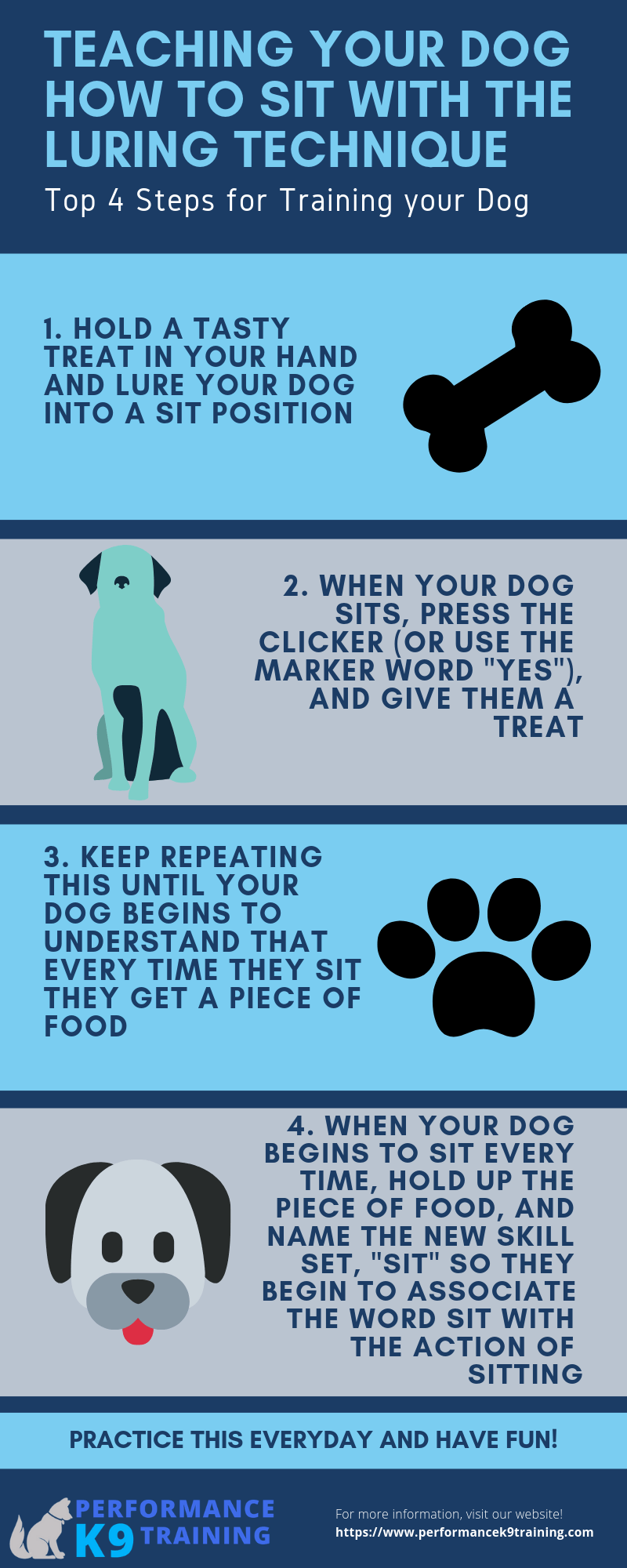Key Takeaways:
- Consistency is key: Training your dog to wait requires consistent and repetitive practice to reinforce the behavior.
- Start with simple commands: Begin by teaching your dog basic commands like "sit" or "stay" before moving on to training them to wait.
- Use positive reinforcement: Rewarding your dog with treats or praise when they successfully wait will motivate them to continue practicing the behavior.
- Gradually increase duration: Start with short waiting periods and gradually increase the time as your dog becomes more comfortable and obedient.
- Avoid distractions: Train your dog in a quiet and controlled environment initially, then gradually introduce distractions to test their ability to wait in different situations.
Are you tired of your dog constantly jumping up on guests or running out the door as soon as it opens? Imagine having a well-behaved furry friend who patiently waits for your command. Learning how to train your dog to wait can bring numerous benefits to both you and your beloved pet. Not only will it make your life easier and more enjoyable, but it will also ensure the safety of your dog in various situations. In this guide, we will explore effective techniques and strategies that will help you teach your dog the valuable skill of waiting. Whether you're a first-time dog owner or have had dogs all your life, mastering this training is essential for creating a harmonious and disciplined relationship with your four-legged companion. So, let's dive into the world of dog training and discover how to transform an impatient pooch into a patient pup!
Why is it important to train your dog to wait?
Training your dog to wait is an essential skill that can help keep them safe and well-behaved. When a dog knows how to wait, it means they understand that they must stay in one place until given permission to move. This can be particularly useful in situations where your dog may be tempted to run off or get into something they shouldn't.
By teaching your dog to wait, you are also teaching them self-control and patience. These are important qualities for a well-behaved dog, as it allows them to listen and follow commands even when they are excited or distracted. Additionally, training your dog to wait can help prevent accidents or injuries, such as running into the street or jumping on people.
Benefits of training your dog to wait:
- Keeps your dog safe
- Prevents accidents and injuries
- Promotes self-control and patience
- Makes your dog more well-behaved
Example scenario:
You are at the park with your dog and want to let them off-leash for some playtime. Before doing so, you ask them to "wait" at the entrance of the park until you give them the signal that it's okay to enter. This ensures that they don't dash into the park before you have a chance to remove their leash and assess the surroundings for potential hazards.
Note:
Training your dog takes time and consistency. It's important to be patient with your furry friend as they learn this new skill. Remember to use positive reinforcement, such as treats or praise, when they successfully wait.
Essential commands to teach your dog before learning to wait
Before you can start training your dog to wait, it's important for them to have a solid foundation of basic commands. These commands will serve as building blocks for more advanced training, including the "wait" command.
The essential commands to teach your dog before learning to wait are:
Sit:
Teaching your dog to sit is one of the first commands they should learn. It's a fundamental behavior that can be used in various situations, including when you want them to wait. Start by holding a treat above their head and slowly moving it back towards their tail. As they follow the treat with their eyes, their natural instinct will be to sit down. Once they do, reward them with the treat and praise.
Stay:
The "stay" command is similar to "wait," but it requires your dog to remain in place for an extended period of time. It's important for them to master this command before moving on to "wait." Begin by having your dog sit or lie down, then show them an open palm while saying "stay." Take a step back and if they stay in place, reward them with a treat and praise. Gradually increase the distance and duration of the stay as your dog becomes more comfortable.
Note:
Consistency is key when teaching these basic commands. Practice them regularly in different environments and gradually introduce distractions once your dog has mastered the basics.
How to start training your dog to wait during mealtime
Why is it important for your dog to wait during mealtime?
When it comes to mealtime, it's crucial for your dog to learn the concept of waiting. This not only helps prevent them from begging or stealing food, but it also establishes you as the pack leader and reinforces their obedience. By teaching your dog to wait patiently before eating, you are instilling discipline and self-control in them.
Steps to train your dog to wait during mealtime:
1. Start by holding your dog's bowl filled with their food.
2. Use a firm command such as "wait" or "stay" and make sure they understand what you expect from them.
3. Slowly lower the bowl towards the ground while keeping an eye on your dog's behavior.
4. If they try to grab the food before you give them permission, quickly lift the bowl back up and repeat the command.
5. Once they remain calm and patient, slowly place the bowl on the ground and give them a release command like "okay" or "go ahead."
6. Repeat this process consistently during every mealtime until your dog understands that they must wait before eating.
Remember, consistency is key when training your dog. Be patient and reward them with praise or treats when they successfully wait without trying to snatch their food.
Tips for successful training:
- Start training when your dog is hungry so that they are more motivated to listen and follow commands.
- Keep training sessions short but frequent, around 5-10 minutes each time.
- Use positive reinforcement techniques such as treats, praise, or petting whenever your dog waits patiently.
- Gradually increase the duration of waiting time as your dog becomes more comfortable with the concept.
By following these steps and tips, you can effectively train your dog to wait during mealtime, ensuring a well-behaved and obedient companion.
Tips for teaching your dog to wait when entering or leaving the house
Why is it important for your dog to wait when entering or leaving the house?
Teaching your dog to wait when entering or leaving the house is essential for their safety and the safety of others. It prevents them from bolting out the door and potentially getting lost or injured. Additionally, it establishes boundaries and reinforces your role as the leader, promoting good behavior and obedience in your dog.
Steps to teach your dog to wait when entering or leaving the house:
1. Begin by putting your dog on a leash before opening any doors.
2. Stand in front of the door with your hand on the doorknob but do not open it yet.
3. Use a command like "wait" or "stay" while gently restraining your dog with the leash.
4. If they try to move towards the door, give a quick tug on the leash and repeat the command.
5. Once they remain still, slowly open the door while maintaining control over their movement with the leash.
6. If they attempt to rush out, close the door immediately and repeat the process until they understand that they must wait for permission.
7. When you are ready for them to enter or exit, give a release command like "okay" or "let's go."
Tips for successful training:
- Practice this training exercise multiple times throughout the day in different scenarios (front door, back door) to reinforce consistency.
- Use treats as rewards when your dog successfully waits without trying to dash through the door.
- Gradually increase distractions around them while practicing this exercise so that they learn to focus on waiting regardless of external stimuli.
By following these steps and tips, you can effectively teach your dog to wait when entering or leaving the house, ensuring their safety and reinforcing good behavior.
(Note: Due to the limitations of text-based responses, diagrams cannot be included using markdown mermaid syntax. However, visual aids such as diagrams can be helpful in demonstrating training techniques.)
Training your dog to patiently wait while putting on their leash or collar
Why is it important to train your dog to wait?
Training your dog to patiently wait while you put on their leash or collar is an essential skill that can make your daily walks more enjoyable and safe. When a dog is excited and eager to go outside, they may jump around, making it difficult for you to properly attach their leash. By teaching them to wait calmly, you can prevent accidents or injuries that may occur if they were to suddenly dart off without being properly secured.
Step-by-step guide for training your dog to wait
1. Start by holding the leash or collar in one hand and a treat in the other.
2. Show the treat to your dog and say "wait" in a firm but calm voice.
3. Slowly move the treat towards their nose, but if they try to grab it, quickly pull it away and say "no."
4. Repeat this process until your dog understands that they need to stay still and not snatch the treat.
5. Once they consistently wait for the treat, begin attaching the leash or collar while repeating the command "wait."
6. If your dog starts moving before you finish attaching the leash, calmly say "wait" again and start over.
7. Gradually increase the duration of waiting time before rewarding them with the treat.
Tips for reinforcing and maintaining the "wait" command with your dog over time
- Practice regularly: Consistency is key when training your dog. Set aside dedicated training sessions each day to reinforce the "wait" command.
- Gradually increase distractions: Start training in a quiet environment and gradually introduce distractions such as other people or dogs nearby. This will help your dog learn to focus on waiting regardless of external stimuli.
- Reward good behavior: Whenever your dog successfully waits without moving, reward them with praise, treats, or a favorite toy. Positive reinforcement will motivate them to continue obeying the command.
- Be patient: Training takes time and every dog learns at their own pace. Stay calm and patient throughout the process, avoiding frustration or punishment if they don't immediately grasp the concept.
- Consistency is key: Ensure that all family members and anyone who interacts with your dog follows the same training techniques and uses the same command word ("wait"). This consistency will help reinforce the behavior and prevent confusion for your furry friend.
Remember, training your dog to wait patiently while putting on their leash or collar requires patience, consistency, and positive reinforcement. With practice and dedication, you'll soon have a well-behaved companion ready for enjoyable walks together.
Step-by-step guide for training your dog to wait before crossing the street
Why is it important to train your dog to wait before crossing the street?
Training your dog to wait before crossing the street is crucial for their safety as well as yours. Uncontrolled dashes across busy roads can lead to accidents or even fatal consequences. By teaching them to wait at curbsides until given permission, you can ensure that both you and your furry friend stay out of harm's way.
Step-by-step guide for training your dog to wait before crossing the street
1. Begin by finding a quiet street or an area with minimal traffic where you can safely practice.
2. Stand at a curb with your dog on a leash and say "wait" in a firm voice.
3. Hold onto the leash tightly while keeping one foot slightly forward as a physical barrier.
4. If your dog tries to step off the curb, gently pull them back while repeating "wait."
5. Once they understand that they need to stay put, give them praise and a treat.
6. Gradually increase the duration of waiting time before rewarding them.
7. Practice in different locations with varying levels of traffic to generalize the behavior.
Tips for reinforcing and maintaining the "wait" command with your dog over time
- Use visual cues: Consider using hand signals along with verbal commands to reinforce the "wait" behavior. This can help your dog understand and respond even when they cannot hear you clearly.
- Practice with distractions: Introduce controlled distractions such as bicycles or pedestrians while training your dog to wait. This will help them learn to focus on you and wait patiently, even in stimulating environments.
- Safety first: Always prioritize safety when crossing streets. Ensure that both you and your dog are visible to drivers, use designated crosswalks whenever possible, and remain vigilant for any potential hazards.
- Consistency is key: Reinforce the "wait" command during every street crossing, regardless of how familiar or quiet the area may be. Consistency will help solidify the behavior as a habit for your dog.
By consistently practicing and reinforcing the "wait" command, you can ensure that your dog becomes a responsible pedestrian who understands the importance of waiting before crossing any street.
Tips for reinforcing and maintaining the "wait" command with your dog over time
Why is it important to reinforce and maintain the "wait" command?
Once you have successfully trained your dog to wait patiently, it's essential to reinforce and maintain this behavior over time. Regular reinforcement ensures that they continue obeying the command reliably, even in different situations or environments.
Tips for reinforcing and maintaining the "wait" command
- Continue regular training sessions: Even after your dog has learned to wait, incorporate occasional training sessions into their routine to keep their skills sharp.
- Randomize rewards: Instead of rewarding your dog every time they wait, occasionally provide treats or praise randomly. This helps prevent them from becoming solely treat-motivated and reinforces the behavior without constant rewards.
- Gradually increase difficulty: Once your dog has mastered waiting in controlled environments, gradually expose them to more challenging situations. This could include distractions, longer waiting times, or practicing in busier areas.
- Use real-life scenarios: Incorporate the "wait" command into everyday situations such as waiting at doorways, before mealtime, or when greeting visitors. This reinforces their understanding that waiting is a general rule rather than limited to specific contexts.
- Stay consistent with cues and commands: Maintain consistency in your verbal cues and hand signals for the "wait" command. This prevents confusion and ensures that your dog understands what is expected of them.
By consistently reinforcing and maintaining the "wait" command, you can have peace of mind knowing that your dog will patiently wait in various situations, making them a well-behaved companion both at home and out in public.
In conclusion, training your dog to wait is an important skill that can help keep them safe and well-behaved. By using consistent commands, positive reinforcement, and patience, you can teach your dog to wait calmly in various situations.
What is the hand signal for wait dog?
The behavior of waiting is an effective way to manage your dog's impulses and keep them calm in exciting situations. To indicate that your dog should wait, extend your hand out in front of you at waist height, with your palm facing forward. This technique can be useful in controlling your dog's behavior.
How do I teach my dog to wait before fetching?
Once your dog has successfully retrieved the item a few times, ask them to wait while you either place or toss the item a short distance away. Then return to their side, wait a few seconds, and then let them go and retrieve the object.
What language do police dogs respond to?
Police dogs are typically German Shepherd dogs, and they are often imported from Europe where they are trained using German dog commands. These commands include "Sitz" (pronounced "zitz") for sit and "Platz" (pronounced "plah-tz") for down. Before they can be used for police work, these dogs are taught these German commands.
What is the prayer position for dogs?
In the event of an attack, dogs sometimes adopt a posture known as the 'praying position', where their hind end is raised in the air while their front legs and head are lowered to the ground. In cases of severe attacks, dogs may experience acute shock, intense sadness, and potentially even lose their life.
What is the first trick to teach a dog?
To begin, teach your dog how to shake hands. By using the same motion that your dog uses to shake hands, you can train it to lift its paw to wave. This is a delightful trick that will capture attention and be adorable to see.
Is it good to make your dog wait for food?
Training your dog to have patience can improve their overall manners and behavior. Teaching your dog to wait for their food helps them learn to control their excitement. It is possible to teach any dog, regardless of age or household, to wait patiently for their food, whether it's a treat or a full meal.

















